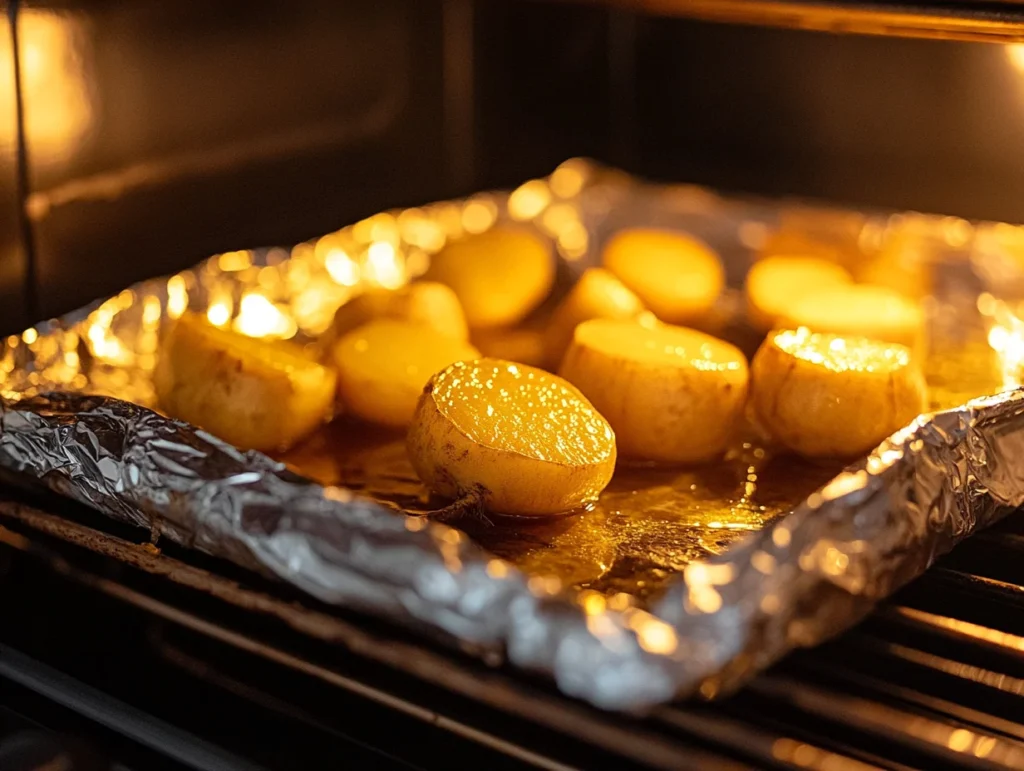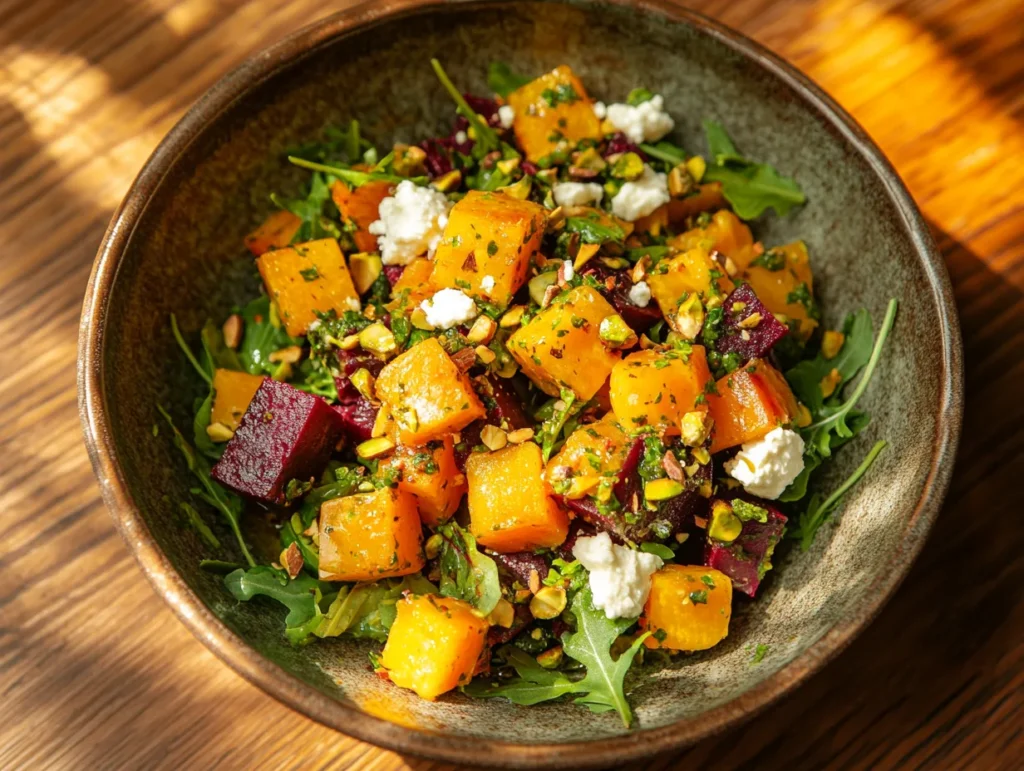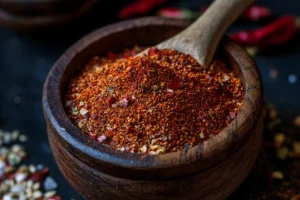Introduction to Golden Beets
What Are Golden Beets?
Golden beets, also known as yellow beets, are a variety of beetroot distinguished by their sunny yellow color and sweeter, milder flavor. Unlike their red counterparts, golden beets don’t bleed their pigment when cooked, making them a neater choice for dishes where presentation matters.
These roots have been cultivated for centuries and are now celebrated not just for their taste but also for their versatility in recipes. Whether roasted, steamed, or eaten raw, golden beets bring a delightful earthiness to salads, soups, and side dishes.
Interestingly, golden beets are often preferred by those who find red beets too earthy or overpowering. Their vibrant color also makes them an excellent addition to any dish, instantly enhancing its visual appeal.
Nutritional Benefits of Golden Beets
Golden beets are more than just a pretty face—they’re packed with essential nutrients that make them a valuable addition to a healthy diet. Rich in vitamins A, C, and potassium, these golden gems support everything from immune function to skin health.
Here’s a quick look at the nutritional highlights:
| Nutrient | Benefit |
|---|---|
| Vitamin C | Boosts immunity and promotes glowing skin |
| Folate | Supports cell function and tissue growth |
| Potassium | Helps regulate blood pressure |
| Fiber | Improves digestion and gut health |
| Antioxidants | Fights inflammation and oxidative stress |
Additionally, golden beets are low in calories but high in fiber, making them perfect for those who want to feel full without overloading on calories. Their natural sweetness can also satisfy sugar cravings in a healthier way.
Whether you’re enjoying them roasted, boiled, or raw in a salad, golden beets offer a burst of nutrients in every bite. Plus, their earthy yet sweet flavor ensures they pair beautifully with a wide range of ingredients.
Why Choose Golden Beets Over Red Beets?
Golden beets and red beets share a family tree, but they have distinct differences in taste, texture, and even culinary uses. While red beets are known for their robust, earthy flavor and vibrant crimson hue, golden beets bring a milder sweetness and a golden-yellow color that adds brightness to any dish.
Flavor Differences Between Golden and Red Beets
The most noticeable difference between golden beets and their red cousins is the taste. Golden beets have a sweeter, milder flavor with less of the earthy, almost mineral-like taste that red beets are known for. This makes them a favorite for those who find red beets too intense.
Golden beets also have a smoother texture when cooked, making them ideal for dishes like salads, soups, or even roasting. Their vibrant yellow color doesn’t bleed into other ingredients, unlike red beets, which can stain everything they touch.
If you’re planning to prepare a golden beets recipe, the golden variety is an excellent choice for visually appealing dishes that maintain a clean presentation.
For another beet recipe variation, you might enjoy this Beet Feta Salad Recipe, which highlights the versatility of beets in salads.
Best Culinary Uses for Golden Beets
Golden beets are incredibly versatile in the kitchen. They can be:
- Roasted: Caramelizes their natural sugars for a rich, earthy sweetness.
- Boiled or Steamed: Keeps them tender and juicy while preserving their vibrant color.
- Eaten Raw: Sliced thinly or grated into salads for a fresh, crunchy texture.
- Pickled: Adds a tangy kick while preserving their beautiful golden hue.
Golden beets are also perfect in grain bowls, paired with feta cheese or goat cheese, and topped with crunchy nuts. Their sweet profile balances salty, tangy, and even spicy flavors exceptionally well.
Whether you’re crafting a hearty beet salad or incorporating them into soups, golden beets elevate your dishes with both their flavor and aesthetic appeal.
Preparing Golden Beets
Golden beets are easy to prepare but require a bit of care to ensure they maintain their flavor, color, and texture. Whether you’re roasting, boiling, or steaming them, a little preparation goes a long way in making your golden beets recipe a success.
How to Choose the Best Golden Beets
When selecting golden beets at the market or grocery store:
- Look for firm beets with smooth, unblemished skin.
- Avoid those with soft spots or wrinkled skin, as these may indicate aging or poor storage.
- If they still have greens attached, make sure they’re fresh, crisp, and vibrant. The greens are edible and can be sautéed or added to salads.
Fresh, high-quality golden beets are key to ensuring your dish has the best flavor and texture.
How to Store Golden Beets for Freshness
Proper storage keeps golden beets fresh for weeks. Follow these simple tips:
- Remove the Greens: If the greens are attached, cut them off, leaving about an inch of the stem. Store the greens separately.
- Refrigerate the Roots: Place the beets in a breathable bag and store them in the refrigerator’s crisper drawer.
- Use Within a Month: While beets have a long shelf life, it’s best to use them within a month for peak flavor and texture.
If you’re storing cooked golden beets, keep them in an airtight container in the refrigerator for up to 5 days.
For tips on fermenting beets and adding tangy flavors, check out this helpful guide on How to Ferment Beets Recipe.
Essential Tools for Cooking Golden Beets
Preparing golden beets doesn’t require fancy equipment, but a few basic tools can make the process easier:
- Sharp Knife: For trimming and slicing beets.
- Vegetable Peeler: To remove the skin efficiently.
- Aluminum Foil: Essential for roasting beets in the oven.
- Baking Sheet: For even roasting.
- Steamer Basket: Perfect for steaming beets while preserving nutrients.
With the right tools and preparation, your golden beets recipe will shine in both flavor and presentation.
Golden Beets Cooking Methods
Golden beets are incredibly versatile in the kitchen, offering a variety of ways to cook them while preserving their natural sweetness and vibrant color. Whether roasted, boiled, steamed, or even enjoyed raw, each method brings out unique flavors and textures. Let’s explore the most popular cooking techniques for preparing your golden beets recipe.
Roasting Golden Beets: Step-by-Step Guide

Roasting is one of the best methods to prepare golden beets because it enhances their sweet, earthy flavors while maintaining their firm texture.
How to Roast Golden Beets:
- Preheat your oven to 400°F (200°C).
- Wash the beets thoroughly and trim off the greens.
- Wrap each beet individually in aluminum foil and drizzle with olive oil.
- Place them on a baking sheet and roast for 40–60 minutes, depending on their size.
- Remove from the oven, let them cool, and peel off the skin under running water.
This method creates tender, caramelized beets that are perfect for salads or grain bowls.
For more inspiration on roasting techniques, you might enjoy this guide on How to Ferment Beets Recipe.
Boiling Golden Beets: A Quick Method
Boiling golden beets is a faster alternative, ideal when you’re short on time.
Steps to Boil Golden Beets:
- Wash and trim the beets, leaving about an inch of stem.
- Place them in a pot and cover with water.
- Add a pinch of salt and bring to a boil.
- Simmer for about 30–45 minutes, depending on their size.
- Drain and allow them to cool before peeling.
Boiled golden beets are tender and ready to use in salads, soups, or side dishes. This method preserves their bright color and sweetness.
Steaming Golden Beets: Retaining Nutrients
Steaming is one of the healthiest ways to cook golden beets, as it retains more nutrients compared to boiling.
How to Steam Golden Beets:
- Trim and wash the beets thoroughly.
- Cut them into halves or quarters for faster steaming.
- Place them in a steamer basket over boiling water.
- Steam for about 15–20 minutes until fork-tender.
Steamed golden beets are soft, juicy, and perfect for tossing into salads or blending into soups.
Raw Golden Beets in Salads: Preparation Tips
Raw golden beets add a delightful crunch and vibrant color to salads.
Best Practices for Using Raw Golden Beets:
- Peel and thinly slice or grate the beets.
- Mix them with greens like arugula or spinach.
- Pair with citrus fruits or sharp cheeses for balance.
Raw golden beets are crisp, mildly sweet, and perfect for fresh, vibrant salads.
Best Golden Beets Recipes

When it comes to crafting a delicious golden beets recipe, the possibilities are endless. From light salads to hearty soups, golden beets add both nutrition and elegance to your dishes.
Simple Roasted Golden Beets with Lemon Vinaigrette
This classic recipe showcases the natural sweetness of golden beets, complemented by a zesty lemon vinaigrette.
Ingredients:
| Ingredient | Quantity |
|---|---|
| Golden Beets | 4-5 medium |
| Olive Oil | 2 tbsp |
| Lemon Juice | 2 tbsp |
| Honey | 1 tsp |
| Ground Cumin | ½ tsp |
| Arugula | 2 cups |
| Feta Cheese | ¼ cup (crumbled) |
| Pistachios | 2 tbsp (toasted) |
Instructions:
- Roast the golden beets following the method described earlier.
- Prepare the lemon vinaigrette by whisking olive oil, lemon juice, honey, and cumin.
- Toss the roasted beets with arugula, feta, and pistachios.
- Drizzle with vinaigrette and serve.
This dish is light, flavorful, and perfect as a side or light lunch.
Golden Beet Salad with Feta and Pistachios
Golden beet salads are a crowd-pleaser. The combination of salty feta, crunchy pistachios, and sweet beets creates an unforgettable dish.
Steps:
- Roast or steam golden beets and cut them into cubes.
- Combine with arugula, feta, and chopped pistachios.
- Dress with olive oil, lemon juice, and a touch of honey.
- Serve chilled or at room temperature.
For more salad inspiration, you might enjoy this Beet Feta Salad Recipe.
Golden Beet Soup: A Comforting Dish
Golden beet soup is warm, creamy, and incredibly nutritious. Its vibrant yellow hue makes it visually stunning.
Steps:
- Roast golden beets and blend them with vegetable stock.
- Add sautéed onions, garlic, and a dash of cream.
- Season with salt, pepper, and fresh herbs.
- Serve hot with a slice of crusty bread.
This soup is perfect for cozy winter evenings or as an appetizer for special dinners.
Pickled Golden Beets for Long-Lasting Flavor
Pickling golden beets enhances their sweetness with a tangy kick. They’re a great addition to sandwiches, salads, or charcuterie boards.
Steps:
- Boil sliced golden beets until tender.
- Pack them in jars with vinegar, sugar, and pickling spices.
- Seal and store in the refrigerator for up to a month.
Pickled golden beets are a versatile condiment that adds brightness to any dish.
For more creative vegetable-based recipes, explore Bacon-Wrapped Asparagus for another delightful side dish idea.
Serving Suggestions for Golden Beets
Golden beets are not only delicious and nutritious but also incredibly versatile when it comes to serving. Their vibrant yellow hue and naturally sweet flavor make them a star ingredient in a wide range of dishes, whether you’re preparing a casual meal or an elegant dinner party spread.
Pairing Golden Beets with Proteins
Golden beets pair beautifully with both plant-based proteins and meat-based dishes, making them a flexible choice for any meal.
- Grilled Chicken or Fish: Serve roasted golden beets alongside grilled chicken breast or a tender fillet of fish. Their mild sweetness balances the savory flavors perfectly.
- Legumes and Grains: Combine golden beets with quinoa, lentils, or chickpeas for a hearty vegetarian bowl packed with protein and fiber.
- Goat Cheese or Feta: These cheeses complement the earthy sweetness of golden beets, adding a creamy, tangy element.
Golden beets also shine in grain bowls, paired with farro, brown rice, or couscous. Add a drizzle of lemon vinaigrette, and you’ve got a restaurant-quality dish at home.
Golden Beet Side Dishes for Holidays
Golden beets are a stunning addition to holiday tables. Their vibrant color adds visual appeal, while their sweet, earthy flavor pairs well with traditional festive dishes.
- Golden Beet and Walnut Salad: A crisp salad with roasted golden beets, toasted walnuts, arugula, and a citrus dressing is an ideal side dish for holiday dinners.
- Beet and Carrot Mash: Mash roasted golden beets with steamed carrots, a touch of butter, and herbs for a colorful twist on traditional mashed sides.
- Pickled Golden Beets: Serve pickled beets alongside a charcuterie board or as a zesty topping for roasted meats.
Whether served hot or cold, golden beets recipes can easily elevate your holiday dining experience with minimal effort.
Frequently Asked Questions About Golden Beets
Golden beets often spark curiosity in the kitchen. From their preparation to their unique flavor, these vibrant root vegetables offer a lot to explore. Here are answers to some of the most common questions about golden beets recipes to help you make the most of them in your meals.
How Do You Eat Golden Beets?
Golden beets can be enjoyed in a variety of ways, making them one of the most versatile ingredients in the kitchen. They can be:
- Eaten Raw: Shredded into salads or thinly sliced for a refreshing crunch.
- Roasted: Caramelizes their natural sugars, making them sweet and tender.
- Steamed or Boiled: Perfect for soups, mashes, or warm salads.
- Pickled: Adds a tangy flavor, ideal for sandwiches or charcuterie boards.
In any golden beets recipe, the key is to balance their earthy sweetness with complementary flavors like citrus, salty cheese, or fresh herbs.
What Is the Best Cooking Method for Beets?
Each cooking method offers a slightly different texture and flavor profile, but roasting is often considered the best way to cook golden beets. Roasting enhances their natural sweetness and maintains their vibrant golden color.
- Roasting: Intensifies sweetness and flavor.
- Steaming: Retains most of the nutrients.
- Boiling: A quicker method, but can lead to nutrient loss if overdone.
The choice of method largely depends on how you plan to serve them. For instance, roasted golden beets are perfect for salads, while steamed beets are great in warm bowls.
How to Make Golden Beets Taste Great?
Golden beets already have a naturally sweet flavor, but they can be enhanced with the right seasoning and ingredients:
- Drizzle with olive oil and sprinkle with sea salt before roasting.
- Pair with tangy cheeses like feta or goat cheese.
- Use bright dressings, such as lemon vinaigrette, to add zest.
- Add nuts, such as toasted pistachios or walnuts, for crunch.
With these tips, any golden beets recipe will shine with flavor.
What Do Golden Beets Taste Like?
Golden beets have a milder, sweeter flavor compared to red beets. They lack the earthy, slightly metallic taste of their red counterparts, making them appealing to a broader range of palates.
Their texture, when cooked properly, is smooth and tender, making them suitable for a variety of dishes. Whether raw or roasted, golden beets bring a natural sweetness and vibrant hue to every meal.



